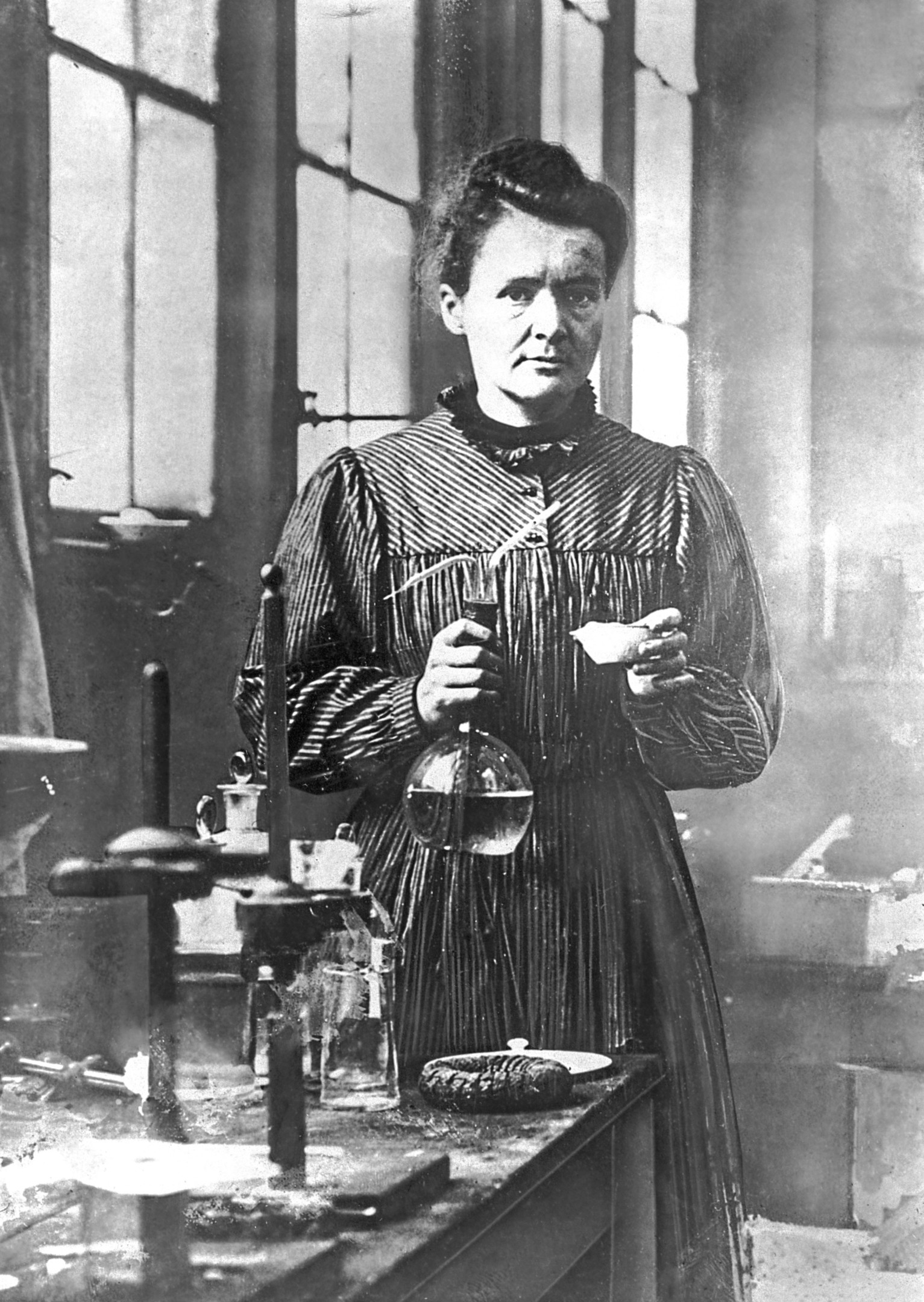
WHEN we think of inventors, there are many obvious ones that spring to mind — Alexander Graham Bell, Thomas Edison, John Logie Baird.
However, while we wouldn’t have the telephone, light bulb or television without these people, this list hasn’t taken into consideration any of the brilliant inventions by ladies in history.
Coffee filters, specialist film developing and Barbie dolls were all invented by women. Here, we take a look at some others that you might not have been aware were female invented.
SECRET COMMUNICATIONS SYSTEM
HEDY LAMARR (1914-2000) was, first and foremost, an actress on the silver screen.
However, the Austrian star also became a pioneer in the field of wireless technology, following her move to America.
She developed a “Secret Communications System” along with co-inventor George Anthiel, which helped to combat the Nazis during the Second World War.
The technology worked by scrambling radio frequencies at irregular intervals between transmission and reception, and it formed an unbreakable code to prevent classified messages from being intercepted by enemy personnel.
Her invention was also used on naval ships during the Cuban Missile Crisis, and in various military applications, but it would also be hugely helpful in forming the basis of mobile phones, fax machines and other wireless technologies.
In 1997, she and George Anthiel were honoured with the Electronic Frontier Foundation Pioneer Award, and Hedy became the first woman to receive the BULBIE TM Gnass Spirit of Achievement Award, which is seen as the Oscar of Inventing.
DISPOSABLE NAPPIES
Unimpressed with the repetitive and monotonous task of having to change her baby’s nappies, bed sheets and clothing, Marion Donovan (1917-1998), from Indiana, USA, thought there had to be an alternative.
She sat at her sewing machine, armed with a shower curtain, and set out to make a waterproof nappy.
Her design was named The Boater, as she thought it looked a little like a boat, but when no manufacturers were interested, she stuck to her guns and set about marketing it herself.
In 1949, it debuted at Saks Fifth Avenue, and was a huge success. She patented the idea in 1951.
THEORY OF RADIOACTIVITY
With Marie Curie (1867-1934) nicknamed The First Lady of Science, the French-Polish physicist and chemist has to be included in our tribute to female inventors. Marie would go on to become the first person to be awarded two Nobel prizes.
Having discovered radioactivity, and the fact you could split the atom, she also found the elements polonium and radium.
Marie refused to patent her process for extracting radium, and by the 1920s, the price of a single gram cost $100,000.
However, she didn’t know that she was regularly exposing herself to a dangerous substance through her work.
She even kept a sample at home next to her bed, using it as a nightlight.
Marie passed away, after battling leukemia, in 1934, aged 66, not having considered the possibility that her exposure to radium was the cause of her pain and illness.
Her laboratory notes and many of her personal belongings are still so radioactive that they cannot safely be viewed or studied.
COMPUTER SOFTWARE
AMAZING GRACE is the name given to the woman credited with creating the first user-friendly computer system.
Having obtained a BA in Mathematics and Physics, Dr Grace Murray Hopper (1906-1992) became the third person to programme the Harvard Mark 1 computer.
Grace also helped to develop COBOL, one of the first high-level programming languages, and invented the first compiler, which basically translated instructions into code for computers.
It made the process a lot faster and revolutionised how computers worked.
As if all of that wasn’t enough, Grace also indirectly came up with the terms “bug” and “debug” in relation to computers.
When her team were experiencing computer issues one day, further investigation revealed that a moth was stuck inside the machine.
She later taped the moth into her log book and wrote the words: “First actual bug found.”
CALLER ID AND CALL WAITING
HOW often have you decided not to answer your phone as it was a call-centre number?
The ability to ignore these people is all thanks to a woman called Dr Shirley Ann Jackson, born in 1946.
Now 71, Washington DC native Shirley produced research which led to the development of Caller ID and Call Waiting.
We also have Shirley to thank for fast broadband as her technology also made fibre-optic cables possible, as well as the portable fax and solar cells.
Shirley is pictured above receiving the National Medal of Science from Barack Obama.
WINDSCREEN WIPERS
WIPERS have come as standard on our cars for many years now, to the extent that we now almost take them for granted.
However, before Mary Anderson (1866-1953) came up with the concept of her “car-window cleaning device”, people had to stick their heads outside to view the road ahead.
After a chilly car ride with the windows open, Mary, from Alabama, designed a wiper that could be operated by a driver within the vehicle, and improved visibility.
Of course, since Mary patented her device in 1903, there have been many improvements made on the design, like rain sensors.
DISHWASHER
Ohio-born Josephine Cochrane (1839-1913) created a machine to wash dishes for her.
It wasn’t an easy journey, but she finally manufactured one that was initially used in hotels before the general public decided it would help them at home, too.
HOME SECURITY SYSTEM
As a nurse working shifts, New Yorker Marie Van Brittan Brown (1922-1999) would often find herself at home alone when her husband worked.
With crime rates on the rise and police response time known to be slow, Marie didn’t feel safe, and set about creating a home security system.
A camera and peephole worked in tandem to allow Marie to see who was at the door without having to answer it.
A microphone set-up allowed for conversation on both sides, and if Marie felt there was something suspicious about the stranger, there was a button that would raise an alarm to signal a security firm or neighbourhood watchman when pressed.
KEVLAR
Stephanie Kwolek’s invention has undoubtedly saved lives.
The American chemist (1923-2014) was the person who invented Kevlar, the lightweight fibre used in bullet-proof vests and body armour.
The material — five times stronger than steel — is used by millions every day, including soldiers fighting on the front line.
LIQUID PAPER
Bette Nesmith Graham (1924-1980) —the mother of Monkee member Michael — was famous in her own right, as the inventor of liquid paper, better known as Tipp-Ex.
Bette worked as a secretary, and even if there was one small mistake, a whole page would have to be retyped.
So Bette came up with what she called “liquid paper”.
A white fluid was simply painted over the mistake, instantly making the page look a lot cleaner, and the idea caught on very quickly, with many other secretaries asking Bette for their own supplies.
Fast forward to today, and the product is available in various formats, from the original brush-on idea, to a roller tape and a foam-tipped head.
The above inventions are only a small selection of female-invented products, and with advancements in technology, more and more creations will be produced to help make our lives even easier.
The only way is up.

Enjoy the convenience of having The Sunday Post delivered as a digital ePaper straight to your smartphone, tablet or computer.
Subscribe for only £5.49 a month and enjoy all the benefits of the printed paper as a digital replica.
Subscribe